Sand Gallery Update: Taking a Closer Look at Golf Course Bunker Sands and More

With summer in full swing, we thought it would be a good idea to take a closer look at a golfer’s natural nemesis…the dreaded sand trap, or bunker. For most players the sand trap is just another aspect of the game, taking both skill to avoid, and know-how to liberate the golf ball back into play. The folks who design and maintain golf courses do not use just any old sand when it comes to creating and replenishing the bunker sand on the golf course. A great deal of thought and engineering go into the sand used to create these annoying hazards.
In this article, we will also catch up with some science teachers from around the country to see how they have been using the free sand sample resources from the Microscopy Society of America’s (MSA) Project MICRO SANDBOX. You can check out some of our previous Sand Gallery articles, including oil sands, Kinetic Sand, professional beach volleyball sand, on Modern Microscopy by searching the word “sand”.
Taking a Closer Look at Golf Course Bunker Sand
When it comes to providing bunker sand, both manufacturers and golf course superintendents are concerned with seven main sand specifications: particle size, particle shape, crusting potential, chemical reaction (pH), infiltration rate, color, and overall playing quality. From a microscopical standpoint, three of these qualities, size, shape and color, are probably the most important and easiest observations to record when setting out to characterize any particle, including sand. In a USGA article written by James Francis Moore, the author refers to the importance of measuring the angularity of the sand grains, which influences the overall playing quality in the sand trap. Moore writes:
“The angularity of the sand is determined by examining the particles with a microscope and comparing them to the chart in Figure 1- Angularity and Sphericity of Sand Particles. After measuring the angularity, the laboratory performs the penetrometer test to determine the sand’s tendency to produce fried-egg lies. The penetrometer measures the sand’s resistance to compression. The values are reported in kg/cm2. The potential for fried-egg lies is based on penetrometer values as described in Table 1 – Potential for Fried-Egg Lies (Thomas Turf Services).”
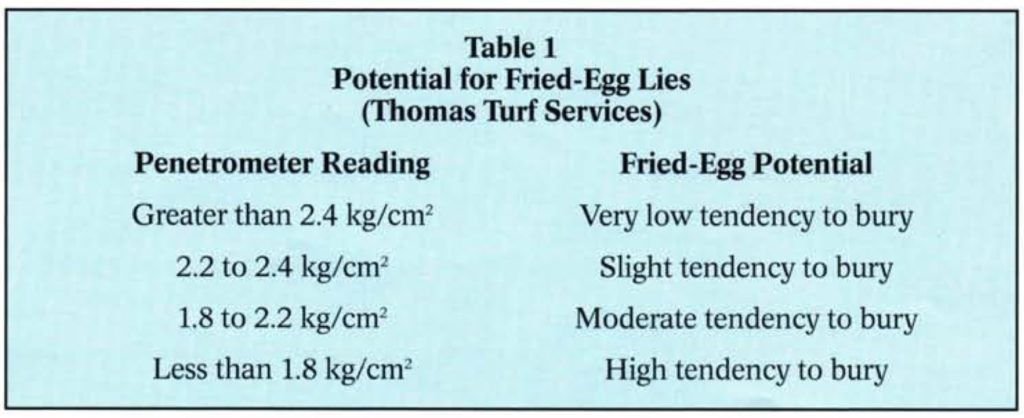
A fried egg lie happens when a golf ball lands in a bunker and significantly sinks into the sand, or has a tendency to bury into the sand upon impact, producing an overall shape resembling a fried egg. Ideally, golf course superintendents and players prefer to have the golf ball remain mostly on top of the sand for an easier exit from the bunker.
A second, less common bunker problem is the sand’s crusting potential. When the crusting potential is high, the bunker sand usually contains elevated levels of silt and/or clay particles. The presence of these unwanted components can, in extreme cases over time, turn a sand trap into a solid slab of concrete!
Our friends at the Hayden Group specialize in supplying premium quality bunker sand to golf courses, and generously supplied us with three samples of their product for this article. The sand samples they sent us included Premier White™, Premier Play™, and ProChoice™. Each sample was examined using a stereomicroscope at a magnification of 25X.
The Premier White sand is their high-end product and is described as having high angularity for holding onto steep faces, great infiltration rate, and a high penetrometer rating for virtually no fried egg lies. As you can see in the photomicrograph below, the sand particles are quite angular and have a fairly wide size range. There are very few rounded particles present.
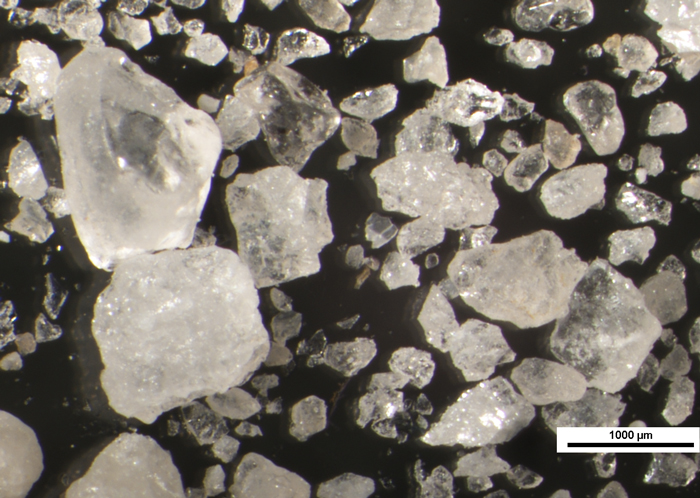
Hayden Group’s mid-range Premier Play sand product is described as a “restorative sand” with sub-angular to rounded shapes. The photomicrograph below illustrates this nicely. The larger particles of sand seem to represent those that are rounded, while the smaller particles have a more angular shape to them. This sand is an off-white color.
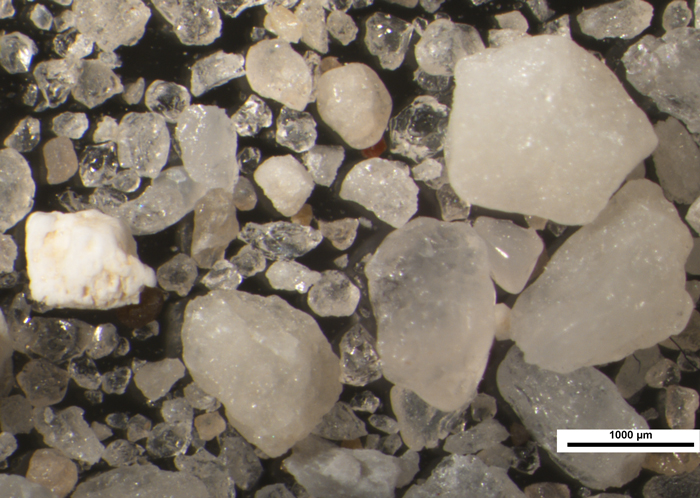
Hayden Group’s ProChoice sand is their economical product that is described as an ideal blend of particle size and angularity. This product has a slight brownish appearance and contains a mix of rounded and sub-angular particles in all size ranges.
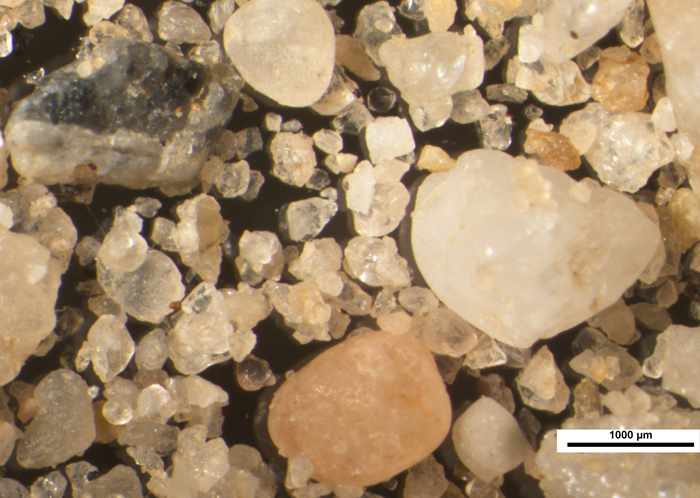
We also thought that this would be a good excuse to get out on the golf course and collect a couple of real-world samples. Let’s see how these sands compare to those from the Hayden Group products.
The sample of bunker sand pictured below is from Cog Hill Golf Course #4, Dubsdread, Lemont, Illinois. The sand appears as dark brown to the eye and is made up of rounded and angular sand particles. You will notice an elongated piece of plant material in the center of the photomicrograph. That is part of the real-world creeping into the bunker sand.
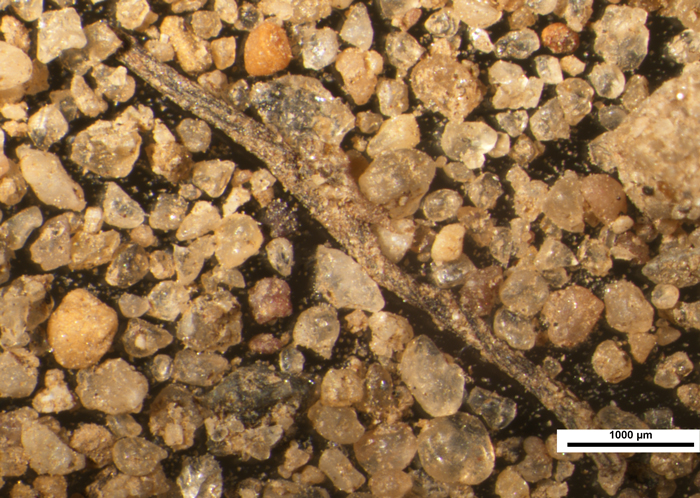
The next sample is from a bunker at Geneva National Golf Course, Lake Geneva, Wisconsin. This sand is lighter brown in color when compared to the Cog Hill sample. There is a mix of angular to sub-angular particles and a wide size range as well.
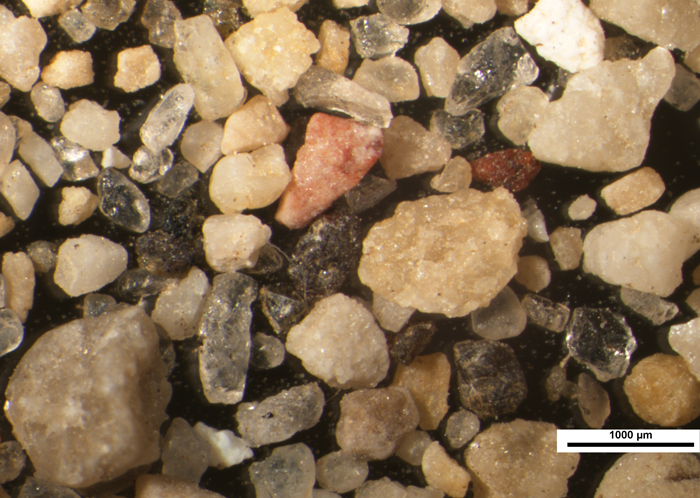
The next time you are out on the golf course, make sure to bring a small container to collect some sand from the bunker. Then take a look at the sand using a low-power stereomicroscope, and note the mix of particles.
A special thanks to the Hayden Group and to our golfers who provided the bunker sand samples for this article.
Sandbox Gallery Update: Sand Requests from Science Teachers
As is our Sand Gallery Update custom, let’s see what the teachers have been doing with their sand requests from the Microscopy Society of America’s Sandbox samples.
From Culpepper, Virginia
A chemistry and marine ecology teacher requested some samples from the MSA Sandbox to supplement her classroom sand collection. The samples will be used to explore color, shape, size, and other factors that cause each sand to look slightly different. Her hope is that by using the Sandbox samples, her lab exercise will be even better for her students. Below are photomicrographs of the samples that were requested:
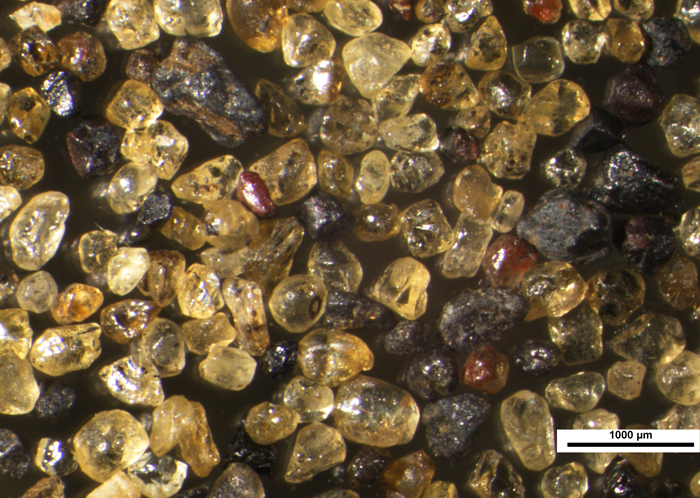

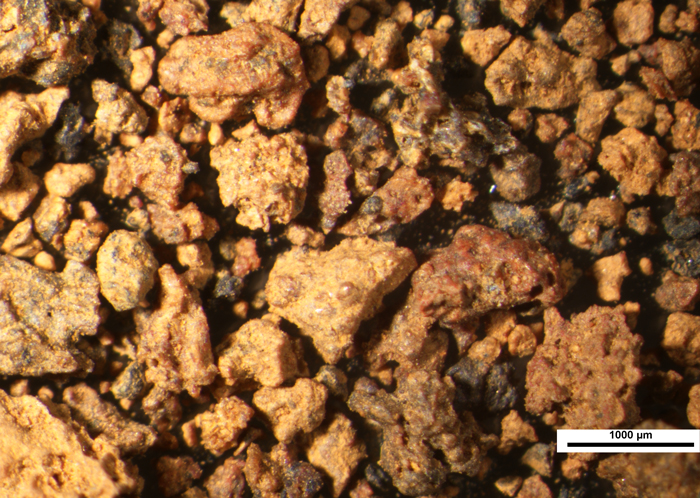

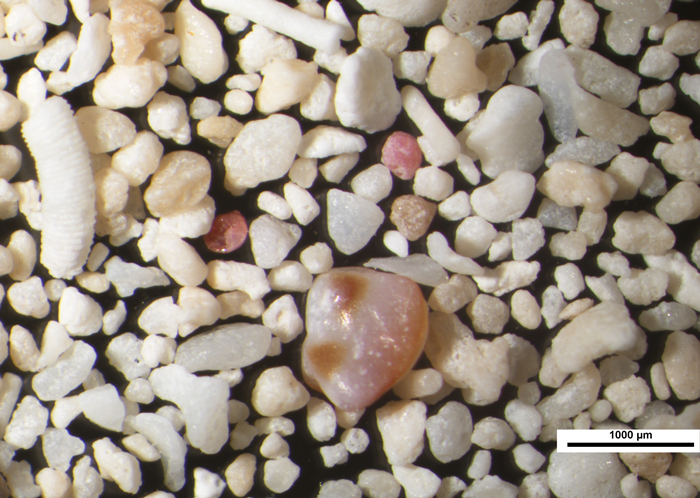

From Missoula, Montana
An organizational leader for the Treasure State 4-H Club in Missoula, Montana requested Sandbox samples to help teach the 4-H geology project. Students will begin a study that takes a look at different sands from various places around the world, how they are comprised of different minerals, and are different colors and sizes. This teacher noticed that our Sandbox collection was lacking in sand samples from Montana and is sending some to add to the collection. Thanks for the donation! Below are photomicrographs of the samples that were requested:
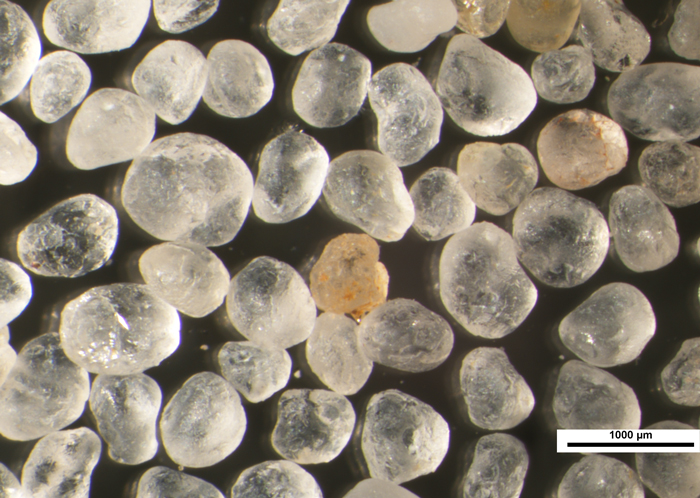





In writing this article, I found it striking just how vastly different each the sand samples are. With over 500 samples contained in the Sandbox collection, many of the world’s beaches, rivers, lakes, and deserts are represented. It seems to make sense that a microscopical atlas of sands and their corresponding elemental composition would be a useful learning resource for students and a natural extension of this collection. We would love to hear your thoughts.
Thank you for reading.
Comments
add comment